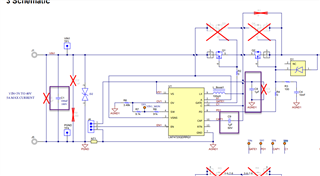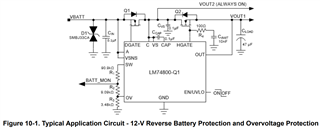Other Parts Discussed in Thread: LM7480-Q1
Hello,
In trying to use LM74720-Q1 as an ideal diode OR controller with inrush protection, there is still 2uF of capacitance that will see an instantaneous dV/dt (purple boxes below, from the EVM design) if a battery or power supply is plugged in live. In bench testing, this causes >40A inrush current spikes. Is the only mitigation for this to implement a series hotswap controller, or can we reduce the cap values circled? If a hotswap controller is the only solution, is there a TI part that is recommended to use in series?




